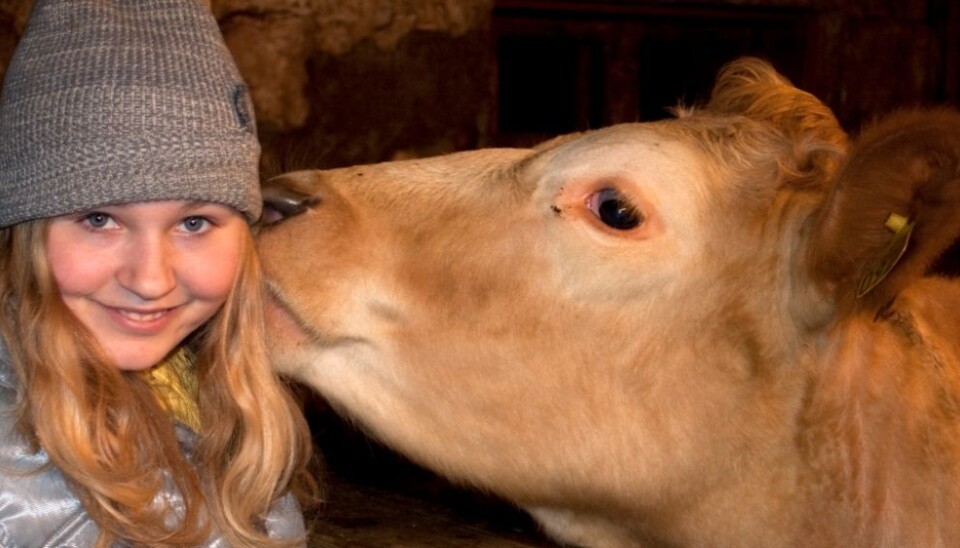
Farm life is beneficial for pregnant women
Children living on farms have a reduced risk of developing allergies. Now researchers know more about why.
“Pregnant women should visit farms to strengthen the immune systems of their children,” according to Swedish researcher Anna-Carin Lundell.
Researchers at Gothenburg University followed 65 healthy new-borns for three years. All of the children lived in rural areas, and half of them lived on dairy farms.
It turned out that in this latter group, the risk of allergies was one-tenth of the risk for the other children.
Closer to an answer
The fact that living on a farm protects against allergies is not news to scientists. They have known about the effect for 15 years.

But the Swedish researchers think they have discovered something about why this is happening.
They have shown that children who are allergic have a higher proportion of immature B cells as new-borns. B cells are linked to the development of allergy.
Bacteria are protective
Scientists have long suspected that immature cells in the immune system are involved in the high incidence of asthma and allergies in the Western world, but no one has been able to prove it, Lundell explains.
Professor Karin C. Lødrup Carlsen does not agree that the new study is revolutionizing the field. Rather, she posits, it supports established knowledge about allergies and immunological maturation processes.
Carlsen leads a University of Oslo (UiO) research team focused on asthma and allergic diseases in children and adolescents.
She says that there is a lot of research on this topic, both in Norway and internationally.
Several other studies have shown that growing up on a farm with barns and stables is protective.
“The hygiene hypothesis, which states that children benefit from being exposed to different bacteria, is collecting support,” Carlsen says.
“On a farm, children are exposed to a wide variety of bacteria and other microorganisms. And people who live close to animals, such as the Amish, have less asthma and allergies.”
Unknown cause
It is not necessarily bacteria and viruses directly from animals that provide the beneficial effect, says Carlsen. It could just as easily be the environment in which animals and people live.
As opposed to the Swedish researcher, Carlsen does not recommend farm visits for pregnant women.
“If there is any help in taking a trip to a farm once in a while, is uncertain. You may have to live there to experience the benefit.”
Researchers at the University of Oslo will initiate a large study on allergy with international partners. They hope to answer some of these questions.
Does milk matter?
The Swedish study was done on children born on dairy farms. That is not entirely coincidental.
In the research community, there has been a long-standing discussion on whether unpasteurized milk reduces the risk of asthma and allergy.
In 2001, researchers examined several thousand children in Austria, Germany and Switzerland who lived on farms and drank unpasteurized milk. The study showed that the milk provided a strong protection against allergy.
Researchers in Gothenburg have asked participants in their study whether they drank unpasteurized milk.
“Our data on diet and consumption of unpasteurized milk has not been analysed yet. But because the Swedish health officials advise against it, it may be very few children,” Lundell says.
Therefore, we may not get a good answer as to whether milk can be significant.
No recommendation
The sale of unpasteurized milk (raw milk) has been forbidden in Norway since 1951. The ban has been the subject of considerable debate.
Carlsen says that there is no evidence that it is beneficial to children.
“We do not know how much bacteria from milk means, as opposed to other environmental factors from life on a farm,” she says.
------------
Read the Norwegian version of this article at forskning.no
Translated by: Lars Nygaard










